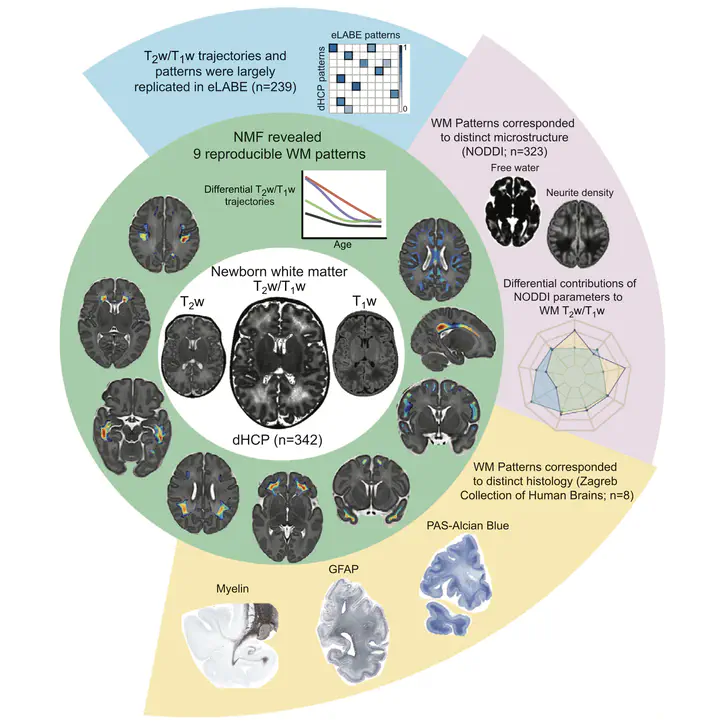Neurodevelopmental patterns of early postnatal white matter maturation represent distinct underlying microstructure and histology

Abstract
Cerebral white matter undergoes a rapid and complex maturation during the early postnatal period. Prior magnetic resonance imaging (MRI) studies of early postnatal development have often been limited by small sample size, single-modality imaging, and univariate analytics. Here, we applied nonnegative matrix factorization, an unsupervised multivariate pattern analysis technique, to T2w/T1w signal ratio maps from the Developing Human Connectome Project (n = 342 newborns) revealing patterns of coordinated white matter maturation. These patterns showed divergent age-related maturational trajectories, which were replicated in another independent cohort (n = 239). Furthermore, we showed that T2w/T1w signal variations in these maturational patterns are explained by differential contributions of white matter microstructural indices derived from diffusion-weighted MRI. Finally, we demonstrated how white matter maturation patterns relate to distinct histological features by comparing our findings with postmortem late fetal/early postnatal brain tissue staining. Together, these results delineate concise and effective representation of early postnatal white matter reorganization.